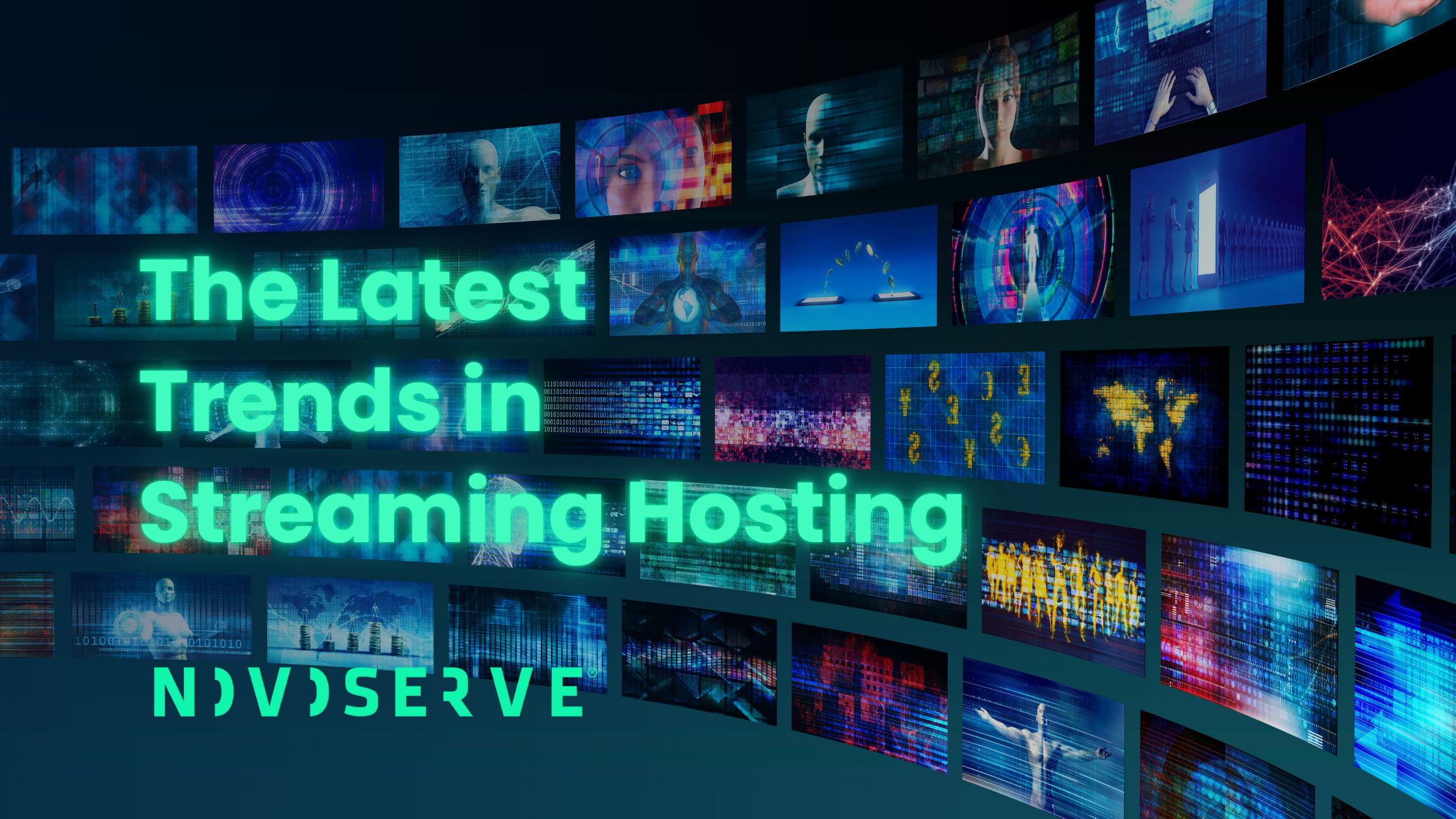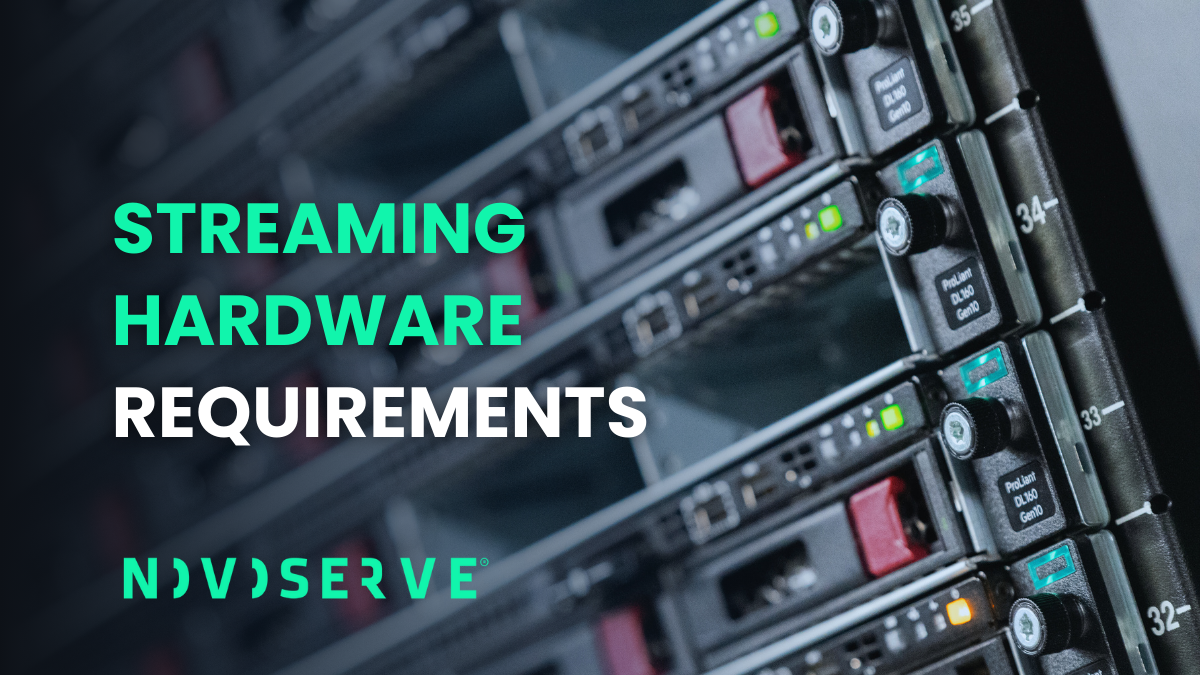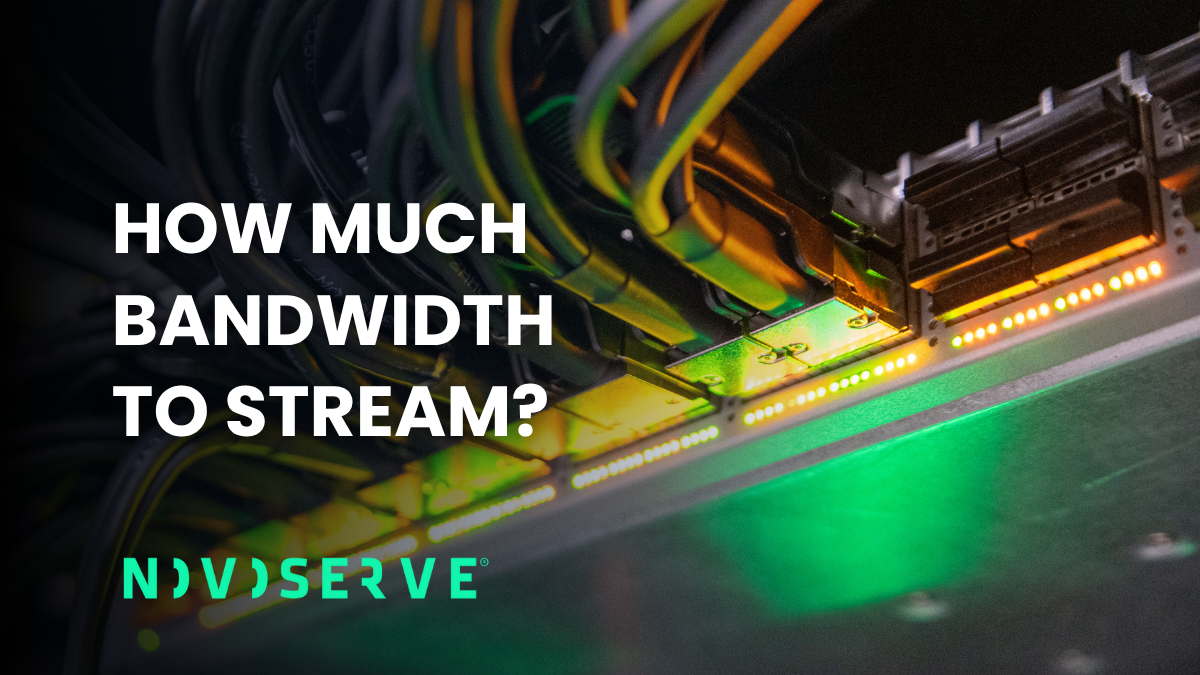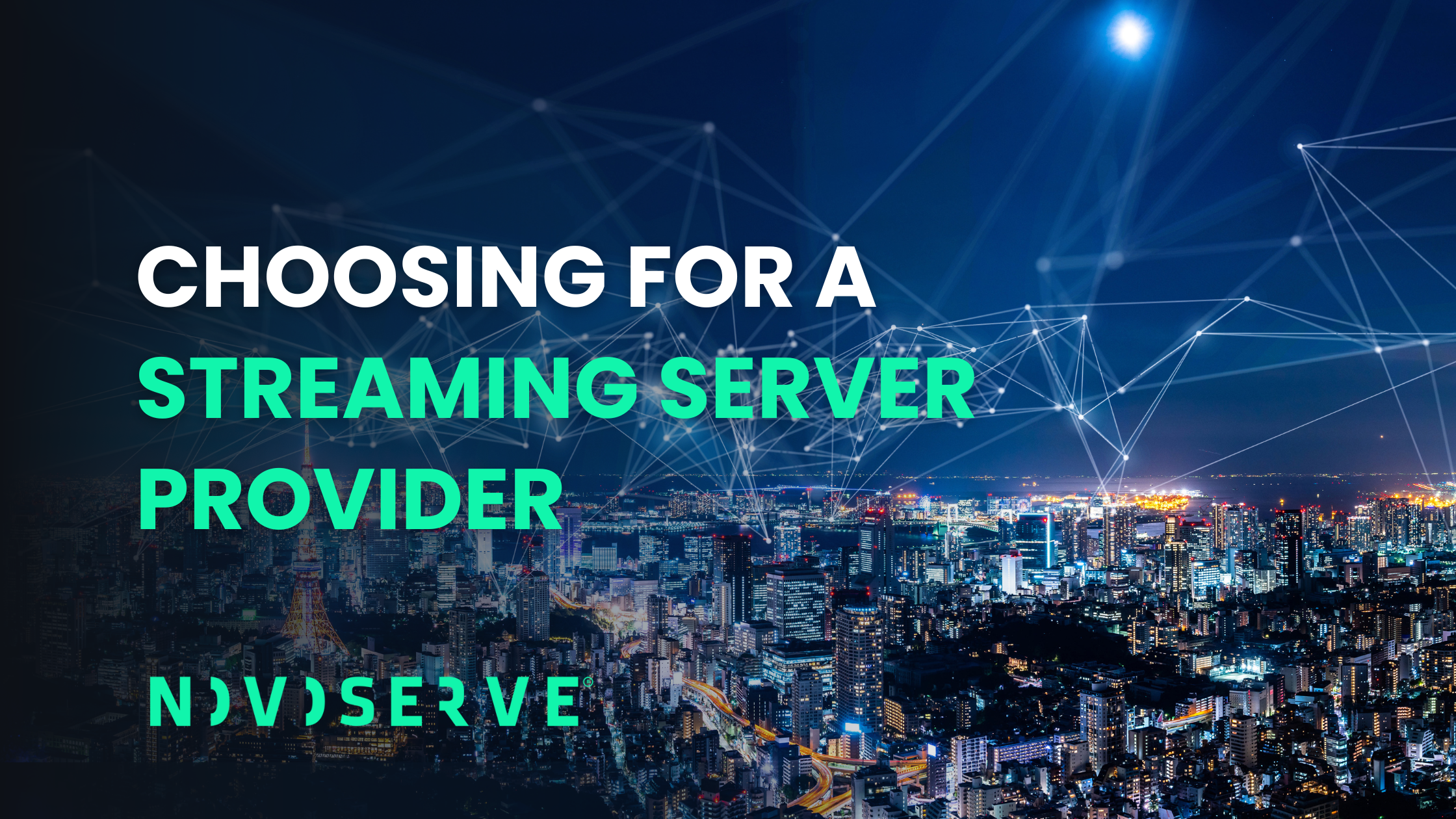As streaming becomes the default way we consume entertainment, news, and even real-time events, the infrastructure behind it must keep pace. From live streaming and IPTV to on-demand platforms, content providers need high-performance streaming servers that can scale rapidly, deliver reliably, and handle surges in traffic without fail.
At NovoServe, we support a wide range of streaming use cases with bare metal streaming server hosting—built for performance, bandwidth freedom, and full control – especially where CPU, GPU, and network I/O bottlenecks must be eliminated. To help your platform grow and stay ahead of the competition, here are the top streaming infrastructure trends in 2025 and how they affect your streaming hosting infrastructure strategy.
1. The Rise of Distributed Workflows
Streaming is no longer just about uploading a video and hitting play. It now involves a chain of complex operations: ingesting content, transcoding it into multiple formats, storing it, delivering it across multiple devices, and analyzing user behavior in real time. In 2025, this is pushing more businesses to adopt distributed workflows across multiple physical locations.
Transcoding may happen in one data center, storage in another, and analytics in a third. This modular approach allows for better load balancing, failover capabilities, and the ability to tailor hardware to each function.
What this means for your streaming servers:
When deploying bare metal streaming servers, flexibility is key. With NovoServe, you can architect a workflow that separates heavy video processing (such as encoding and transcoding) from streaming delivery nodes. Our infrastructure supports GPU and high-core CPU workloads to streamline distributed media pipelines.
2. Scaling for Surges and Spikes
Whether you’re broadcasting a viral gaming stream, a major sporting event, or hosting a large IPTV channel lineup, concurrent viewers can surge in minutes. In 2025, platforms must be able to spin up additional resources instantly—or risk buffering, lag, or worse, outages.
Many businesses are moving away from over-provisioning and toward agile, scalable server environments that grow with demand, particularly during high-traffic events.
How streaming server hosting supports this trend:
With dedicated bare metal servers, you get consistent performance at scale, something shared hosting or general-purpose cloud VMs can’t guarantee. NovoServe’s streaming hosting solutions allow you to provision additional servers quickly and keep up with viewer demand, with the benefit of unmetered bandwidth to avoid overage surprises.
3. High-Bandwidth, High-Quality Video Delivery
Viewers increasingly expect 4K or even 8K quality, and in some markets, HDR (High Dynamic Range) is becoming the standard. This shift brings higher bitrates, which drastically increases the pressure on your streaming infrastructure. A single UHD stream can consume 20–40 Mbps, and when multiplied by thousands of users, the bandwidth requirements skyrocket.
In 2025, bandwidth is the new bottleneck, especially as streaming platforms aim for higher bitrates with less compression to retain visual fidelity.
How NovoServe fits in:
Our streaming server hosting is designed for this bandwidth-heavy reality. With up to 50Gbps unmetered connectivity per server, and Tier-1 transit partners like Telia, Cogent, and others, we empower streaming companies to serve high-resolution content to global audiences—without being throttled or limited by bandwidth caps.
4. Hardware Acceleration and GPU-Powered Streaming
Transcoding and encoding are among the most resource-intensive processes in the streaming pipeline. Software-based transcoding on CPUs can struggle under load, especially for real-time or multi-format output. In 2025, more companies are embracing GPU-accelerated streaming servers to handle these demanding workloads.
Whether you're encoding multiple streams at once, using AI-powered upscaling, or applying real-time overlays, hardware acceleration can significantly reduce latency and improve stream quality.
What to consider in your hosting strategy:
NovoServe offers GPU-ready bare metal streaming servers for clients needing accelerated media processing. By leveraging NVIDIA or AMD GPUs, platforms can deliver faster encoding, smoother playback, and enhanced viewer experiences without overloading CPU resources.
5. IPTV Platform Expansion
IPTV continues its rapid growth worldwide, particularly in regions moving away from traditional cable. But running an IPTV service isn’t as simple as just broadcasting a signal. It involves delivering hundreds or thousands of simultaneous streams, real-time updates, multi-language support, time-shifting, and more.
In 2025, IPTV platforms are prioritizing resilient and scalable server infrastructure that supports constant availability and geographic delivery needs.
Streaming server hosting tailored for IPTV:
NovoServe provides powerful unmetered servers ideal for IPTV workloads—capable of handling constant bandwidth usage and delivering consistent uptime. Whether you operate in Europe, North America, or globally, our network and server configurations ensure your IPTV service is always online and buffer-free.
6. Anti-Piracy and Stream Protection
As the value of premium content rises, so does the incentive to pirate it. In 2025, content protection isn’t just a feature—it’s a requirement. Whether you’re streaming subscription content, live events, or region-locked media, your hosting infrastructure needs to support robust DRM solutions, real-time watermarking, access restrictions, and traffic analysis.
How your servers play a role:
By using dedicated streaming servers, you maintain complete control over your environment, which is crucial for implementing strong anti-piracy tools. Shared environments often expose you to security risks from neighboring tenants. With NovoServe, you get isolated, secure server environments ideal for integrating DRM and forensic watermarking without compromise.
7. Data-Driven Streaming Experiences
Platforms now collect data on everything: viewer behavior, drop-off rates, engagement patterns, and content preferences. In 2025, AI and machine learning are being used more widely to personalize streams, make recommendations, and even adjust bitrates dynamically based on historical viewing behavior.
This shift toward personalization and prediction requires real-time data processing and low-latency analytics.
How streaming hosting enables this:
Running analytics and machine learning models alongside your streaming infrastructure requires significant compute resources. NovoServe’s high-performance servers offer the raw power needed to process large data volumes and enable smarter streaming experiences, all while maintaining smooth delivery to your audience.
8. Regulatory Compliance and Sovereign Hosting
As data protection laws evolve, more streaming platforms must comply with region-specific regulations—whether it’s GDPR in Europe or various copyright laws in the US and beyond. Hosting choices must align with these requirements.
In 2025, the trend is clear: more platforms are looking for hosting partners that offer transparent operations, local control, and jurisdictional alignment.
What this means for your streaming hosting provider:
NovoServe operates data centers in the Netherlands and Germany, powered by renewable energy, and adheres strictly to European data protection standards. Our clients can deploy streaming servers with full confidence in regional compliance, uptime, and environmental responsibility.
The streaming industry is entering a new era—where bandwidth, scalability, security, and intelligent workflows determine success. By keeping up with these trends and investing in the right infrastructure, you can build a platform that performs flawlessly under pressure and grows with your audience.
Want to build your most advanced streaming server infrastructure? Book a free consultation now with us.






